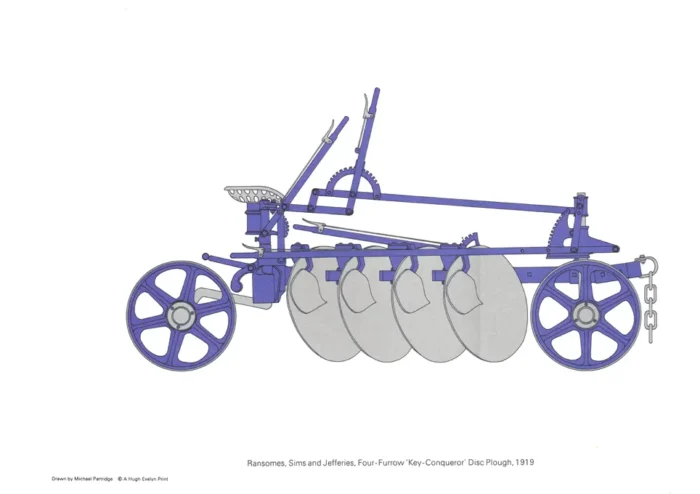Ransomes Four-Furrow ‘Key-Conqueror’ Disc Plough, 1919
£10.00
Ransomes Four-Furrow ‘Key-Conqueror’ Disc Plough, 1919 (scroll down for a more detailed Description)
Published 1969 by © Hugh Evelyn Limited; drawn by Michael Partridge
Size: 34 x 23 cm [13½″ x 9½″] may vary slightly from printers’ cut 50 years ago
Printed on high white matt heavy paper of 138 g/m2
Print is STANDARD size – shipping is the same for 1 to 10 prints (based on largest print size in your order) – see Shipping & Returns
In stock
Description
The first oil driven tractors appeared early in the 20th Century. During the early years of the motor tractor the farmer had to adapt his existing horse-drawn implements and vehicles to suit the newly acquired machine. Draw-bars to replace the shafts were usually constructed by local blacksmiths, but eventually manufacturers developed a wide range of towing attachments to convert most machines. Many leading manufacturers making implements for steam driven tractors used their experience to develop ploughs, harrows, cultivators and other implements for the light tractor. One such implement was the disc harrow, designed for cultivating rough land preparatory to making the seed bed. It had a ‘˜T’ shaped chassis about 8 feet wide holding either 16 plain or 16 cut-away discs, usually of 18 in diameter. Plain discs were preferred for general cultivation and cut-away discs for dry, hard land. The discs were interchangeable. A similar implement was the double gang harrow which had a row of spade shaped blades which were followed by a row of discs. Trailers forage boxes and manure spreaders were not manufactured until much later. Plough design for tractor attachment varied greatly but could be divided into two types: 1. the independent plough, under the control of the operator seated on it where the furrows, land and hind wheels were all controlled by separate levers (like the Ransomes Key-Conqueror of 1919) and 2. The self-lift plough operated by the tractor driver.
Additional information
| Weight | 0.0118 kg |
|---|---|
| Dimensions | 35 × 24.5 cm |





